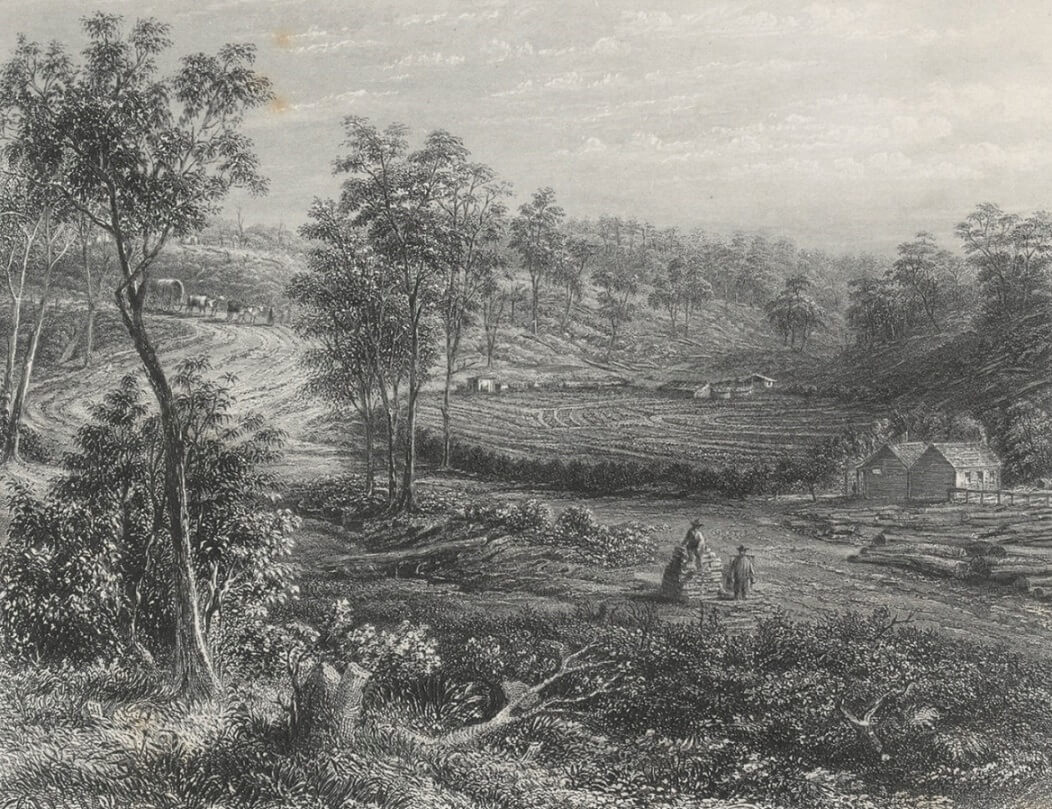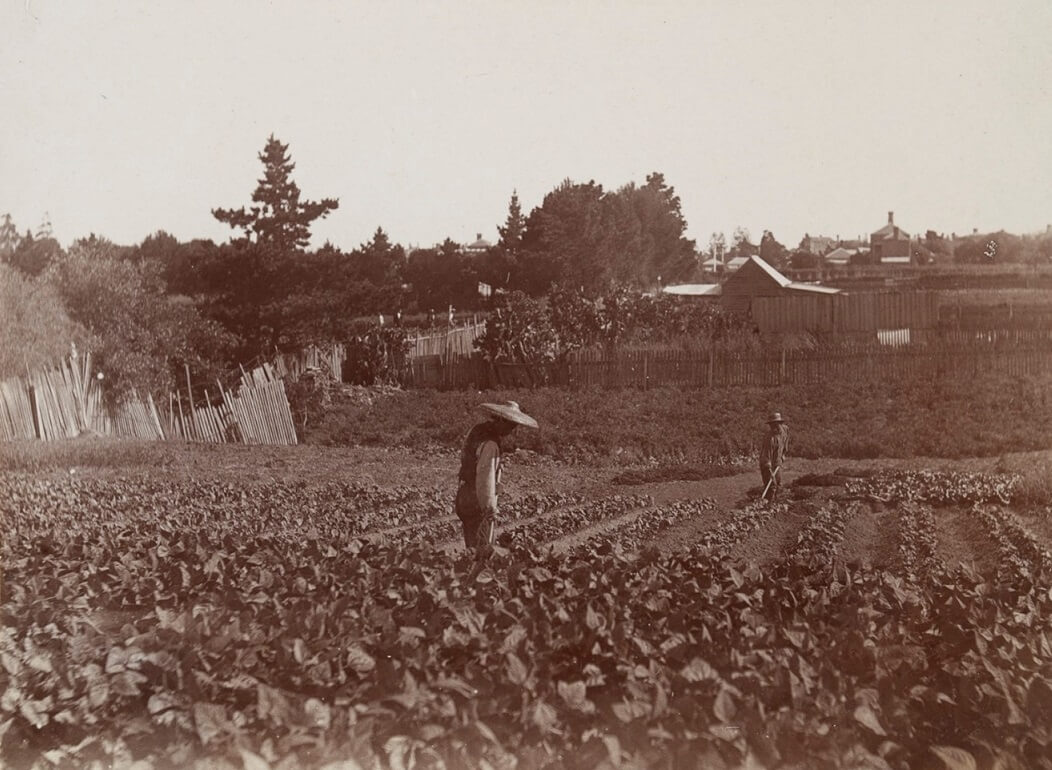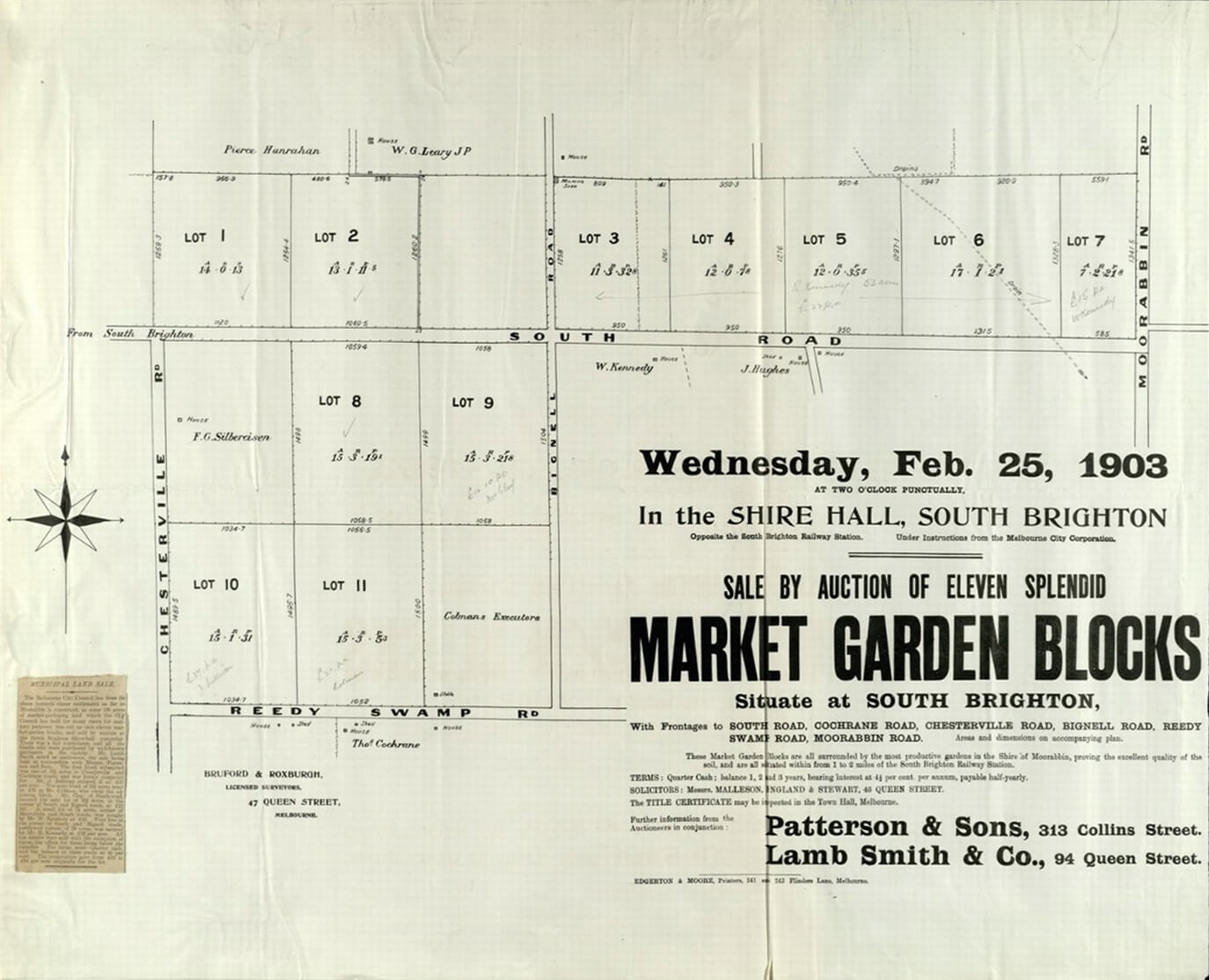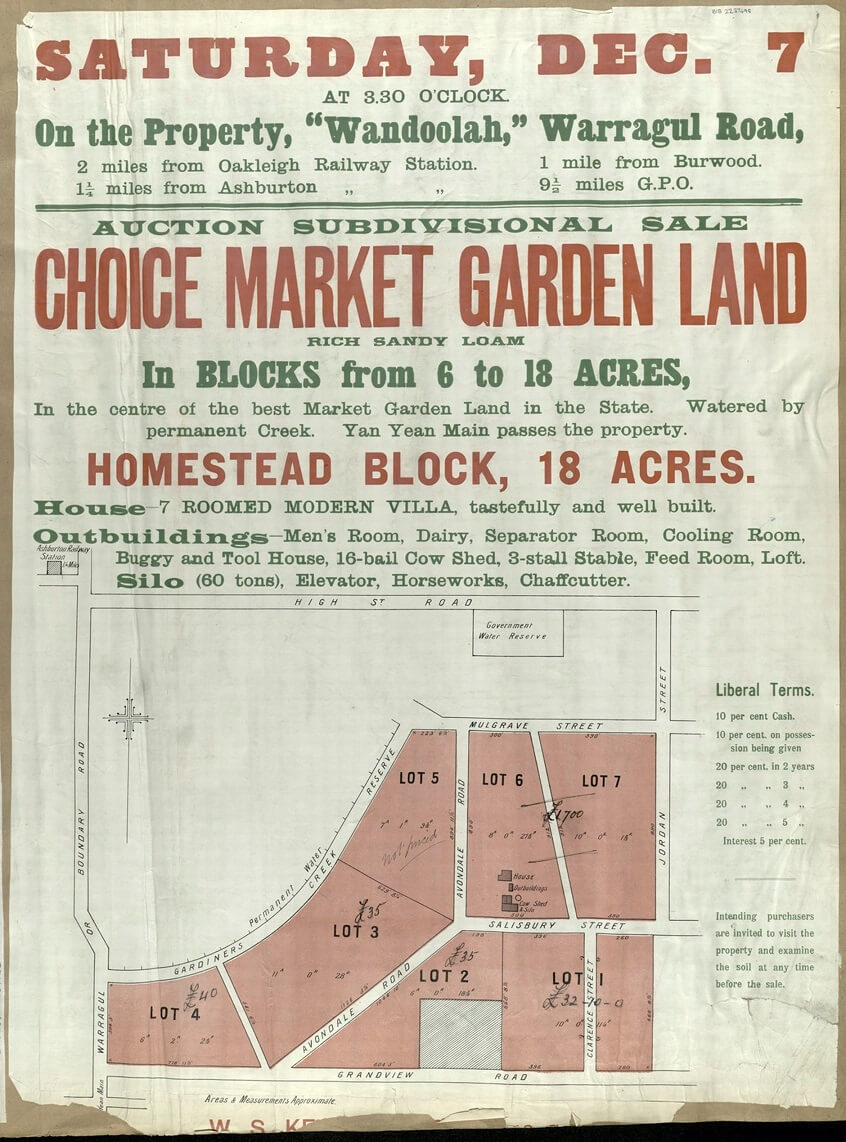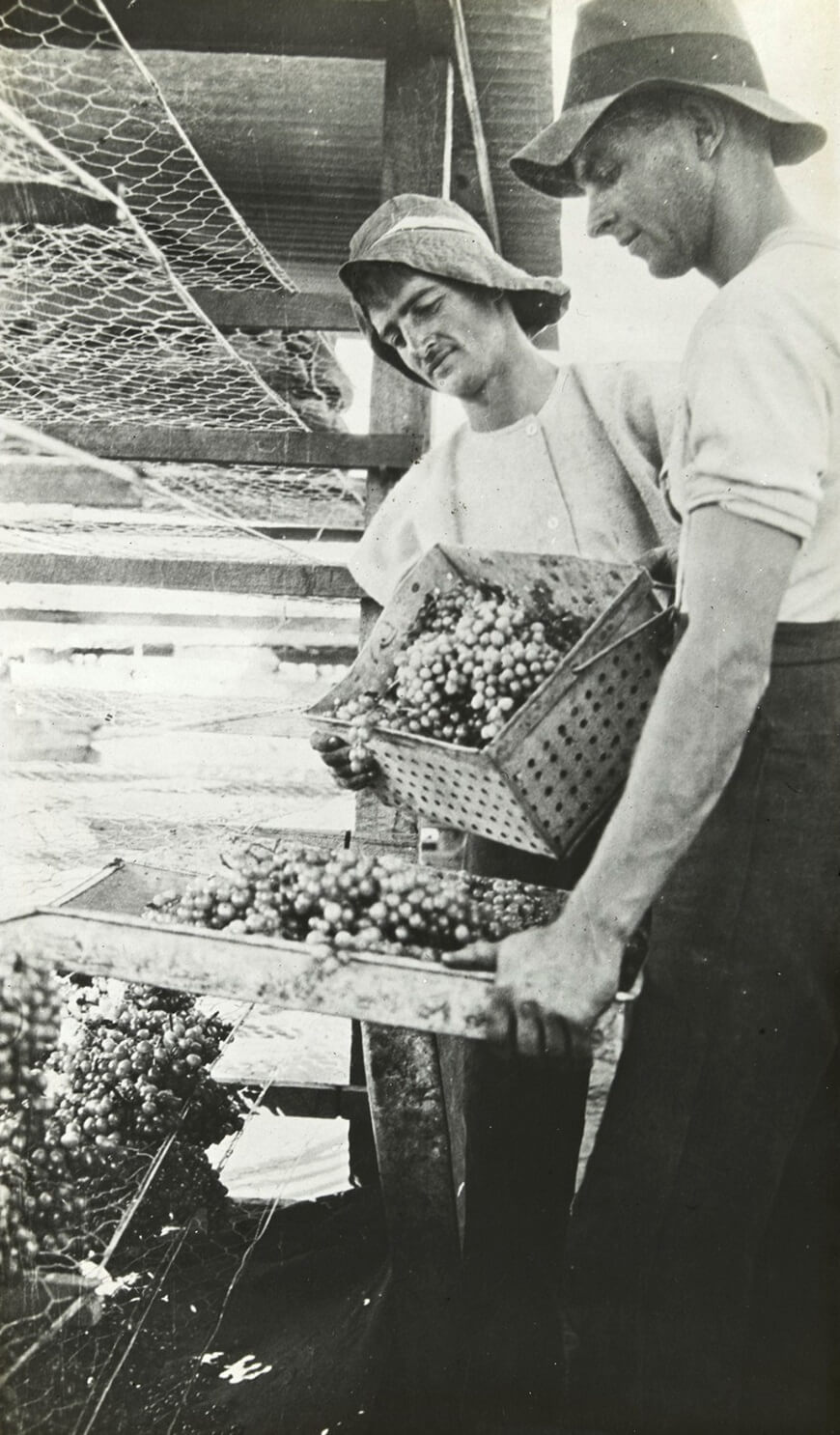As Melbourne grew from a scattered village to a settled town, a market for fresh fruit and vegetables soon developed. The first gardens were located along the main watercourses, the Yarra, Merri Creek and the Maribyrnong, with the water carted laboriously by hand and cart. From the 1840s others created gardens in the sandy areas around Brighton, carting their produce into town for sale. These early gardeners transported their produce by wagon or cart to market, often returning with a load of manure from the many horse stables in town. From the 1880s some growers fertilised their crops with nightsoil, purchased from contractors, who deposited their loads on large fields on the edge of the city. This trade in nightsoil undoubtedly assisted in the spread of the deadly typhoid infections that plagued Melbourne until the water-borne sewerage system was established in 1898.
Chinese gardeners arrived in Victoria with the gold rushes, although there may have been individuals who arrived before this. Some moved to Melbourne after trying their luck on the fields, settling near the creeks to the north and east of the city, in Coburg, Camberwell, Hawthorn, Heidelberg and Brighton. By the early-1900s Chinese growers dominated the market, with wholesalers in Little Bourke Street holding a near-monopoly of fruit and vegetable sales.
A Chinese garden in Victoria, c. 1874-6. J C Armytage engraver
Reproduced courtesy State Library Victoria
Although this print was published in the mid-1870s, the library catalogue notes that it was taken from an original drawing of the 1840s.
Chinese Market Gardens, c. 1901, photographer unknown
Reproduced courtesy State Library Victoria
Advertisement for Market Garden Blocks for sale, South Brighton, 1903
Reproduced courtesy State Library Victoria
Sale bill for market garden blocks, Warragul Road, c. 1907
Reproduced courtesy State Library Victoria
The blocks ranged in size from six to 18 acres and may have been created by the subdivision of a former dairy farm.
Italian market gardeners first established farms near Werribee from the 1920s, while other important growing areas were the areas around Glen Waverley. However, as Melbourne’s urban sprawl expanded, these areas became too valuable for gardening and the vegetable gardens moved further out. Other important regions included the irrigated farms along the Murray, that supplied grapes, stone fruit, oranges and tomatoes for the table and for canning and fruit juices, often processed in local factories.
Grape picking, Murray region, c. 1900-1940. State Rivers & Water supply Commission
Reproduced courtesy State Library Victoria
Market gardening always relied heavily on family labour, with assistance from itinerant workers at harvest/picking times. By the late-twentieth century those workers were often recent immigrants, young tourists on working visas and then a growing group of retired people, the so-called ‘grey army’, who travelled from place to place picking up odd jobs. The pandemic caused major disruptions to all of these groups, leading growers to petition government for approval to bring in selected groups of workers to fill the gap. Others had to dump crops which they could not harvest.

